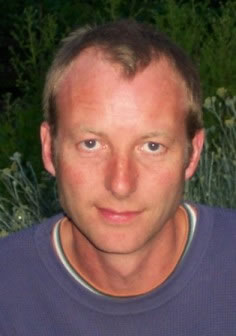In the news section you can find out how well Jane Renton is progressing with the new Sowing the Seed projects working with key stage I and 2 in two primary schools. We have a No-dig compost demonstration garden being developed by our Chairman at Capel Manor, London. For publicity and promotion we have produced a new flyer. a copy of which is printed on the back page, and we have a new look website. It is so nice to be developing some projects and even nicer that its not just me who is working on them! My sincere thanks to all those involved.
It's also nice to have the continual input from our regular article contributors. Alison's 'musings on her plot' is full of fresh ideas as she shares with us her thoughts on the world, as you do when working with the soil. Mike Mason is in search of vegetables that contain the minerals and trace minerals we need for health. He has discovered what he calls the 'fab four' vegetables that we should all consider growing and eating. Of course just any old quality of vegetable won't do. If it's not grown for nutrition it may turn out to be missing some essential nutrients. Staying with the 'fab four' Charles Dowding gives us tips and advice on how best to grow them.
Food quality is the major theme for my ongoing Sowing the Seed story. I am sorry if it seems to go on too long but at these early stages of development I feel it necessary to include so much detail. It's all relevant and I hope you stick with it as we consider the nutritional qualities of chemical. organic and spiritually grown food. We look at the issues that surround each in the hope we may get closer to understanding what nutritious food is or would look like if we tried to quantify it. This, of course, is essential to understand if our aim is to grow food for nutrition. It's such a huge topic but as we look at it holistically and think about all the issues that are involved the meaning behind it will become clearer over time.
Finally, I am pleased, no delighted, to print some letters regarding the last Sowing the Seed article. Stimulating debate is a very healthy and positive way forward. After all Moving Beyond Organic is an unknown quantity so please, lets have more letters. Whatever you think we would love to hear what you think.
CORRECTION
In the Winter 07/08 issue 166.1 said in my editorial that 'as of Jan 08 the new organic standards allowing 0.9% GM contamination will be introduced. I slipped up here. I apologise. It is in fact 2009 when these new standards will come into force.
At a recent conference at the Royal Agricultural College, Cirencester this topic was debated. The event was organised by Elm Farm Research and was led by producers of organic food (meat, milk, vegetables, etc). Also in attendance were representatives from DEFRA, the Soil Association and other certification bodies.
As new standards were discussed a definite split in opinion was felt. On the one side the certification bodies, academics and politicians argued we should fight the new proposals and make them work for us. On the other side many producers felt it was time to move away from the word organic and come up with something new. I stood up and said my 'two penny worth' about Moving Beyond Organic which got some recognition from the audience.
Outcomes of this conference can be found at www.efrc.com follow links or search for 'ORC Conference proceedings'.
Matt Adams
The above is taken from the GGA quarterly News Journal. You can join GGA here



